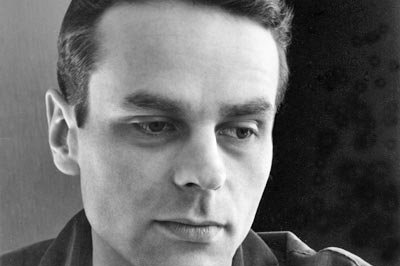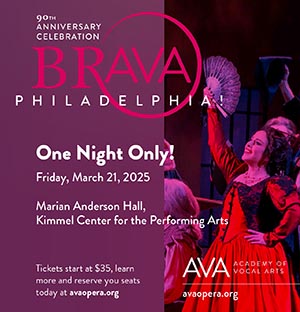The fabulous documentary “Big Joy: The Adventures of James Broughton” screens at International House at 7 p. m. April 5, along with “Dreamwood,” one of the pioneering pansexual poet and filmmaker’s shorts.
Broughton and his work are ripe for rediscovery. Broughton, a poet in pre-Beat era San Francisco, is described in the film as a Bohemian, a visionary and a prankster — whose philosophy was “follow the weird.”
It is Broughton’s “seize the moment” and “seize the joy” attitude that makes him such a magical personality. He gives witty poetry readings. He makes surreal, sexy and amusing short films — one of which, “The Pleasure Garden,” won a prize at Cannes in 1953. He had a relationship and a child with Pauline Kael in the years before she was the famous “New Yorker” film critic. He also had a relationship with Kermit Sheets, who founded Centaur Press and published Broughton’s poetry in an era when it was risky to be openly gay.
As the documentary shows, Broughton eventually broke up with Sheets, married a woman named Suzanna Hart, had two more kids, discovered Jungian psychology and eventually met Joel Singer, 35 years his junior, his partner for the rest of his life.
“Big Joy” elegantly and eloquently captures the language and visual style of Broughton’s work. Vignettes featuring performance artist Keith Hennessy are especially strong at contextualizing the poet/filmmaker’s work, and co-directors Stephen Silha, Eric Slade and Dawn Logsdon deftly weave together interviews, home-movie footage, film clips, photographs and text to create an enchanting documentary.
Silha, who will introduce the film and do a post-screening Q&A, spoke to PGN: about Broughton and his film.
PGN: How and where did you discover Broughton and his work? SS: I first discovered his work at MOMA [Museum of Modern Art] in 1979. There was an exhibit of his films curated by Jon Gartenberg (who curates the experimental shorts at the Tribeca Film Festival). I sat down and was in awe. Then, 10 years later, I was assigned to the same cabin as James and Joel at a Radical Fairies gathering in Oregon. We became friends and he became a mentor. He was working on his memoir at the time but said writing prose was so prosaic. We helped each other with writing projects. I wanted to write a book on him, but realized it had to be a film. That’s when I reached out to Eric [Slade]. Four-and-a-half years later, we have a film.
PGN: How did you access and compile all of the archival photos, film clips, interviews, etc., to tell the story? SS: We had four researchers looking for archival footage. There’s not much of Broughton himself talking about his films on camera but we had lots of audio. Joel is the executor of the estate and he gave us complete carte blanche to all the films and books [journals].
PGN: How did you work on telling the story, narratively and visually? The spirit of Broughton seems to infect the film. SS: We started out by doing interviews, since we were afraid some of his contemporaries would not be around much longer. Dawn [who edited] had the idea of using the journals as the spine of the film, because they gave you insight into the artist. He journaled from age 13-85, when he died. We went to Kent State and looked for entries that were most relevant to his story.
PGN: What surprised you most about Broughton? SS: I knew him for the last 10 years of his life, where he was an embodiment of “Big Joy.” There were many surprises, though. What surprised me was how depressed he got in his teens, 20s and 30s, and his struggle with his sexuality in his early years and into his 40s. He was 61 when he met Joel and they were together 25 years. I wanted to show you could find your soulmate at any age and still have a great relationship. Another thing that surprised me was his integral role in the San Francisco renaissance. Lawrence Ferlinghetti said that he came into the era in 1951, but Broughton and his friends were already here.
PGN: What can you say about the importance of recounting Broughton’s history? How can we relate to him today? SS: We’ve always seen this as a multimedia project since Broughton was multimedia before the word existed. If he were alive today, he would be doing YouTube videos. He was ahead of his time. Keith Hennessy said he feels he is standing on Broughton’s shoulders every time he walks on stage. Gus Van Sant told me he learned and stole a lot from Broughton.
PGN: Where can people see Broughton’s work/films? SS: There is a three-DVD set issued by Facets video in 2005 and still available in limited qualities. It’s likely going out of print, but we are hoping to put out a new package of Broughton films. We have a James Broughton channel on YouTube. A few films are there and through Netflix. We are bringing his work back.
Catch “Big Joy” and “Dreamwood” at 7 p.m. April 5 at International House, 3701 Chestnut St. For more information or tickets, visit www.ihousephilly.org or call 215-387-5125.

